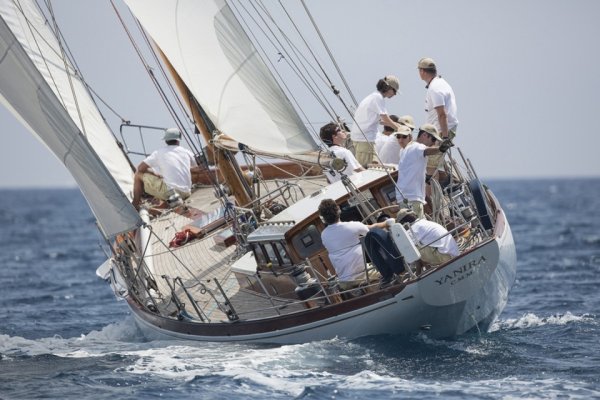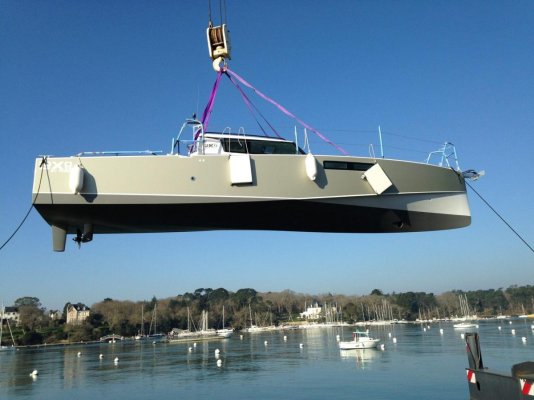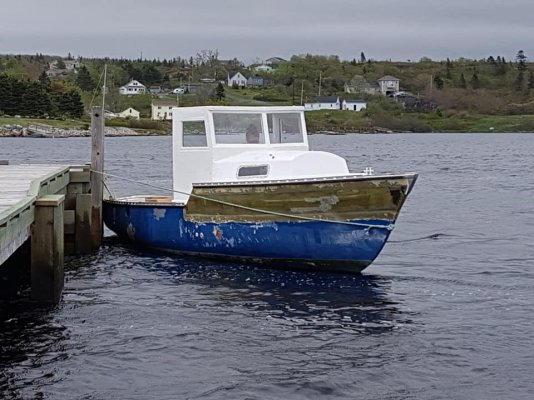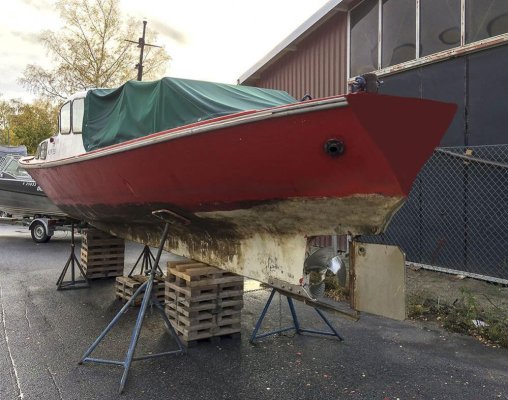.. a square sterned planing hull can be as efficient as a typical trawler.
Yes, a planing hull can be as fuel efficient as a double ended boat (canoe stern) within the efficient speed range of the latter. The Loxo 32 is a good example of that. It doesn't drag much water in its wake and the turbulence is minimized.
In other words it's a construction that works very well within its own hull speed (before planing). The Loxo 32 is most certainly having a soft - perhaps barely noticeable - treshold over to planing when speeding up.
So...
If the hull shape of such a boat reduces turbulence by the same amount as an equally sized double ended boat, it can be as fuel efficient - easily driven through water at or below hull speed. If they're equal in that term, then the area of wet surface will probably play a relatively larger role regarding drag.
There are some limits then it komes to floating high like a cork in the water though. The water surface it self is fairly tricky when it comes to drag. But
Any how... such constructions lie the Loxo 32 are still however rather rare - for some reason.
I could pick any square ended boat that equals mine in terms of size/dimensions around the coast here and be fairly sure none of them would be able to be as fuel efficient at (let's say) 8,5 knots. All the "normal", local square ended motorboats of that size are dragging half of the Baltic sea behind them at that speed. Many of them are furthermore a bit wiggly at that speed. They're simply not made for it.
Then we haven't even discussed how the boats behave in rougher seas.
Well, the Loxo 32 is said to behave well and to be seaworthy. What else would they say? But it seems like it is actually very good. But seaworthiness (security) aside, it's also a matter of preference when it comes to how a hull should handle rough seas. I think the Dashews has got this rather well explained when it comes to their philosophy regarding those FPBs.
But in a world where fuel prices rise and CO2 emissions needs drastical reduction, there is surely a market for hulls being efficient also within hull speed range an not only at planing speed. The Loxo 32 is a good example. Cats are probably also getting more popular. And they're even better at fuel efficiency.




 Thanks for your service and making Ketchikan a temporary home away from home. The community of Ketchikan is with title of "A Coast Guard City" for reason. we enjoy a wonderful relationship and respect for the "Coasties".
Thanks for your service and making Ketchikan a temporary home away from home. The community of Ketchikan is with title of "A Coast Guard City" for reason. we enjoy a wonderful relationship and respect for the "Coasties".

